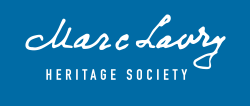
Espresso, Suite
Movements:
- We Came to this Land (Anu Banu Artza), Rock and Roll
- Tango Tiberius
- Polka Carmel
- The Great Area (Hashetach Hagadol), Waltz
- Desert (Arava), Blues
- Boogie-Woogie Tel Aviv
Manuscripts: Located at the National Library of Israel Music Department, the Marc Lavry Archive, System Number(s) 990037147800205171, 990038436660205171
Variations: Two arrangements are available for the composition:
- Unconventional Orchestral Ensemble (Flute, Oboe, 3 Clarinets, 3 Trumpets, Trombone, Percussion, Piano, Accordion, Guitar and Strings)
- Piano Solo
Synopsis:
The suite consists of six scenes in which the composer paints the land of Israel. Lavry excels in dressing up each scene in the rhythm of dances of that era. He dedicates it to the “Espresso Generation” — which is how the young people of that time were called as they were accused of chasing after entertainment, amusements and internationally acclaimed Rock and Roll stars.
- Movement 1 – We Came to this Land (Anu Banu Artza), Rock and Roll: As an opening to the suite, Lavry uses the well-known folk song Anu Banu Artza (We Came to this Land) which the pioneers of Israel used to sing
- Movement Two – Tango Tiberius: A pastoral description of the landscapes of Tiberius, a city on the shores of the Sea of Galilee; Lavry could not resist and ended it with his well-known song, Kineret (Sea of Galilee)
- Movement Three – Polka Carmel: dedicated to the the sailors in the port of Haifa (the city on Mt. Carmel) and their joy
- Movement Four – The Expanse (Hashetach Hagadol), Waltz: In Jaffa there was an area then called “The Expanse” which was considered dubious: bars, crime and the like. In a plastic description, Lavry illustrates with music the shady area, thieves and police, and even ends with a gunshot
- Movement Five – Desert (Arava), Blues: The slogan du jour was “settling the Negev”. Lavry describes the desert landscape (Arava), the camel bells and the caravans
- Movement Six – Boogie-Woogie Tel Aviv: the sounds of the modern city — cars, dancing and a vibrant atmosphere; a true 24/7 city
Anecdote:
When Lavry’s daughter, Efrat, went to study in San Francisco, the family sent her a musical note, a recording of the suite in the form of a radio broadcast. The recording was addressed to both Efrat and the family that hosted her at the time, and was therefore narrated in English. The entire family participated in the recording — Dad Marc, mom Helena, brother Danny, sister Varda, and even the dog, Bambi. This is an excellent example by which you can understand the special culture of the Lavry family. To listen to the full recording, go the the Fun Facts about Marc Lavry page.



